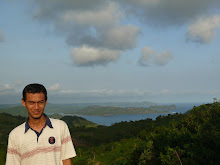Terumbu karang merupakan habitat sekaligus indikator dari keberadaan ikan di laut. Kerusakan terumbu karang menyebabkan tidak adanya ikan di suatu perairan. Kerusakan bisa disebabkan oleh terinjaknya karang oleh manusia, penggunaan jangkar kapal, dan gelombang air laut. Kegiatan transplantasi terumbu karang merupakan suatu cara untuk memperbaiki dan menumbuhkan karang baru sehingga habitat ikan tetap terjaga. Karang merupakan suatu hewan uniseluler yang hidup berkoloni membentuk polip, sehingga transplantasi merupakan suatu cara efektif untuk menumbuhkan terumbu karang, meski butuh waktu yang lama tetapi cara ini merupakan salah satu upaya konservasi yang perlu dilakukan dan disosialisasikan. Program transplantasi yang dilakukan oleh mahasiswa KKN-PPM UGM 2009 hanya meneruskan dan membantu transplantasi terumbu karang yang dilakukan oleh Rubiah Tirta Diver, salah satu dive shop di Pulau Weh.
Media untuk transplantasi terumbu karang berbentuk kerucut dan berpipa, pemilihan media ini agar ikan-ikan masih dapat berenang bebas disekitar media tersebut, pipa yang dipasang berfungsi untuk mengikat karang kecil. Tim KKN-PPM UGM telah melakukan transplantasi yang meliputi pengecoran, penyusunan komposisi media, pencetakan media, dan pemasangan media transplantasi di laut. Waktu yang digunakan untuk membuat media transplantasi hanya memakan waktu 1-2 hari dan tergantung banyaknya pekerja maupun jumlah. Harapannya masyarakat memiliki kesadaran untuk melestarikan terumbu karang melalui transplantasi terumbu karang sehingga keindahan ekosistem tetap terjaga hingga masa depan. Dalam melakukan transplantasi terumbu karang banyak dibantu oleh Pak Dodent, pemilik Rubiah Tirta Divers dan pegawainya.
Pertama disiapkan media penanaman terumbu karang yang berupa cor-coran sedimen berbentuk trapesium 3 dimensi. Media tersebut dapat dicetak di pantai dan di bagian tengah di pasang pipa PVC atau botol bekas. Fungsi pipa yang di pasang di bagian tengah tersebut adalah sebagai tempat untuk mengikat terumbu karang anakan yang akan ditumbuhkan. Bentuk trapesium 3 dimensional berfungsi agar media dapat bertahan dari arus laut yang sangat kuat sehingga dapat tetap berdiri dan tidak mengganggu terumbu yang ditumbuhkan di media tersebut. Adapun fungsi lainnya adalah agar ketika penyusunan media menjadi blok-blok transplantasi terdapat ruang gerak bagi ikan-ikan. Sehingga ikan dapat memiliki tempat hidup, meskipun terumbu karang belum tumbuh.
Langkah selanjutnya adalah pengikatan terumbu karang anakan di media transplantasi. Misalnya pada gambar di bawah dapat dilihat proses pengikatan salah satu jenis terumbu karang yaitu Acropora sedang diikat di media transplantasi. Pengikatan dilakukan dengan menempelkaan terumbu karang di bagian pipa atau kaleng bekas dengan mengikat menggunakan kabel tip berwarna putih.
Setelah semua media transplantasi telah diikat dengan terumbu karang yang ingin ditumbuhkan, maka media transplantasi tersebut dibiarkan dalam perairan laut selama lebih kurang 3-6 bulan agar terumbu karang anakan tersebut dapat tumbuh. Setelah beberapa bulan, terumbu karang yang ditransplantasi akan tumbuh dan ikan-ikan serta hewan laut lain dapat menjadikan daerah sekitar media transplantasi sebagai habitatnya yang baru, seperti terlihat pada gambar berikut ini.



